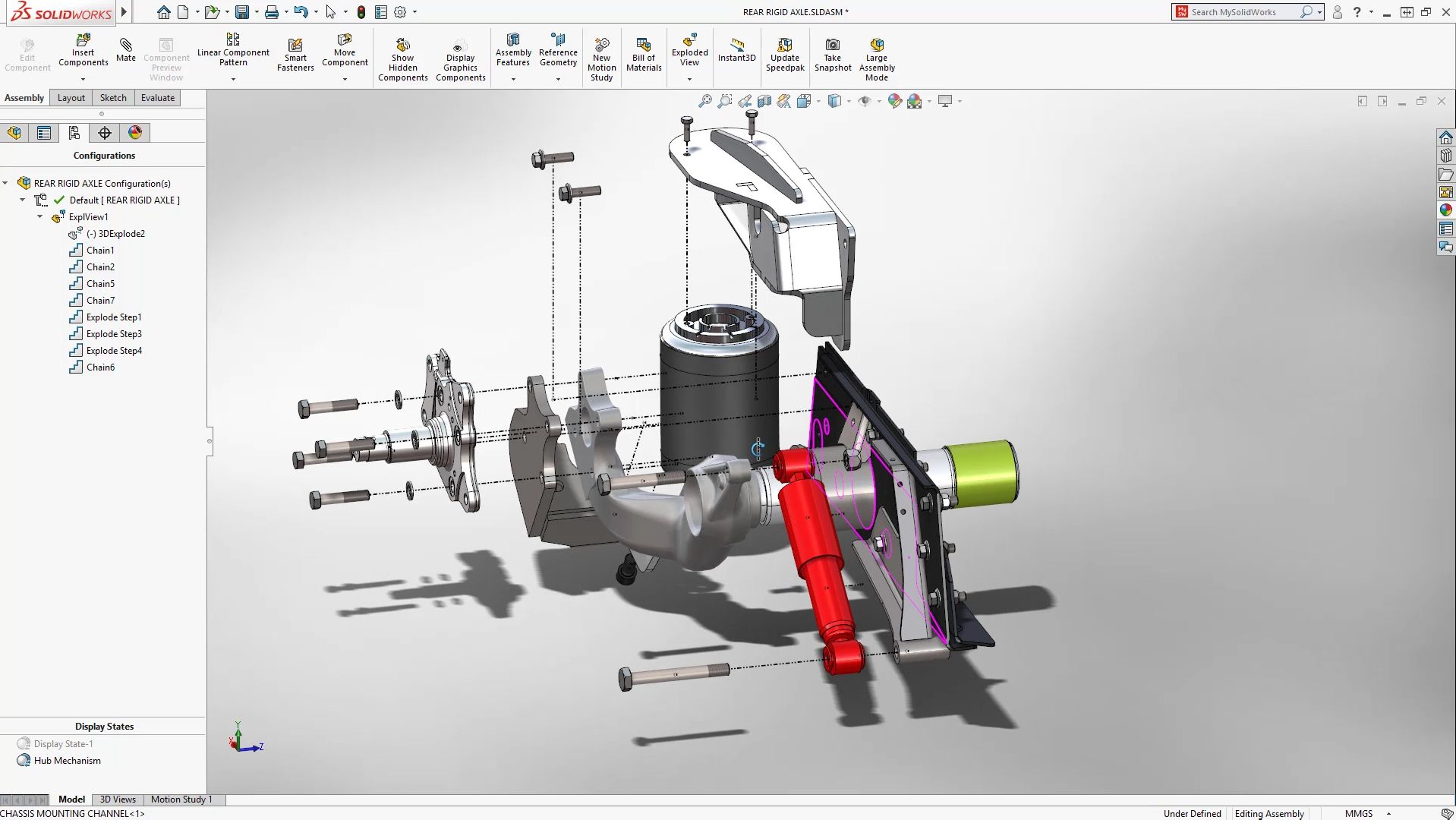Sheet Metal Tab And Slot Design Guide
Mirror to create a new sheet metal part that can be flattened. Use the Tab and Slot feature to interlock sheet metal parts. Use configurations to show steps in the forming process. Use the Costing tool to evaluate sheet metal designs.
Folding and adding bending tabs is one of the easiest and most economical way of making moderately strong joints in sheet-metal parts that will permanently or semi-permanently attach to one another. It requires no screws, rivets, or other pieces of fastening hardware.
- For a slot or hole 1' diameter then the minimum distance 'D' = 2.5T + R (see fig. 'C') Form height to thickness ratio – To determine the minimum form height for sheet metal use the following formula: D = 2.5T + R (see below) The height can be less but it required secondary operations and is far more costly.
- So I just upgraded to 2018 solidworks and I thought I would try out the tab and slot function. I assumed this would have been a feature available in an assembly. But it seems I could only create this feature when I have 2 sheet metal bodies built as one part. I think this would be much better if I could create this feature in assembly.
- Metal Working Processes, Tools, and Machines (sheet and small section steel) Eng. Bob Fairchild CHAB Stove Camp The Farm Sept 2012.
There are few limitations on fastening tabs. The metal tabs that are to be bent should be between 0.12 and 0.8 in. thick. And the metal should have the ductility to stay in place and not spring back after being bent. The metals most commonly joined using tabs are soft steel, aluminum, copper, and brass.
For the best results, parts should be designed to bend perpendicularly to the direction of sheet rolling, or at least 45 deg. from that direction. Also, the stamping burr should be at the inside of the bend when possible. The final bend should be made in the same direction as the preliminary bend.
Sheet metal design guidelines are followed to design quality sheet metal enclosures. This helps in delivering the product at low cost and faster timelines. All

Sheet Metal Design Guidelines
Following points should be considered during the design of sheet metal parts for press bending.
Sheet Metal Material Selection
- Simulation Studies
- Past Experience
- Reverse Engineer existing products
- Experimental Studies
Read this guide to know more about sheet metal material selection Process.
Minimum inside bend Radius for Sheet Metal Parts
Sharp inside bend radius in sheetmetal parts can cause material flow problems in soft material and fracturing in hard material. Which results in localized necking or fracture. Therefore sharp bend radius is not recommended in sheet metal parts.
Bend radius throughout the sheet metal part is kept constant to take the advantage of using the same tool during manufacturing.
Minimum Sheet Metal Bend Length Recommendations
Minimum Hole Diameter Guidelines
Hole/Slot Distance from Bend Edge
Minimum distance between hole/slot edge to bend edge is recommended to avoid metal distortion, deformation and fracturing.
Center to Center Distance Between two Holes
Minimum center to center distance between two holes in sheet metal parts is required to avoid metal distortion, deformation and fracturing.
Recommended Minimum distance between two hole centers in sheet metal design should be equal to sum of hole radius plus two times the sheet thickness.
Recommended Distance = Radius of Hole1 + Radius of Hole2 + Sheet ThicknessEffect of Grain Direction in Sheet Metal Bending
During sheet metal processing ( rolling operation), material grains are arranged in the direction of rolling. When Sheetmetal is bend perpendicular to rolling direction grain rearranges. That has negligible impact on part strength. Whereas bending parallel to rolling direction can lead to cracks because of destruction in grain structure.
Bend Relief in Sheet Metal Bend
Bend relief is provided at the end of the bending edge in sheet metal design to avoid any crack tearing in the corner. Relief height is generally kept greater than two times of sheet thickness plus bend radius.
Extrude Hole Size and Position Guidelines
Creating an extruded hole using a punching process requires extreme pressure/Force. Extruded holes very close to the part edge can lead to sheet metal deformation or tearing. Therefore the minimum distance between the extruded hole to edge if maintained.
Extruded hole to part edge (B) = 3T + D/2Center of extruded Holes (A) = (5 + Hole Dia + 2T)Extruded Hole and bend edge (C) = 3T + R + D/2Round Emboss Design Guidelines

Creating Emboss feature using sheet metal punching requires extreme pressure. Very close emboss to the part edge, can lead to deformation in the sheet metal part.
A – Distance From Emboss To part Edge = 3T + D/2B- Distance Between Two Emboss = (5 + D)C- Distance between Emboss and Sheet Metal bend = 3T + R + D/2Dimple Feature Design in Sheet Metal Parts
Louver Feature Design in Sheet Metal
Minimum distance between louver feature and bending edge is maintained to avoid metal deformation.
(P1) Distance Between Two lowers on Shorter Edge = 5 mm(P2) Distance Between Two lowers on Longer Edge = 8 mm